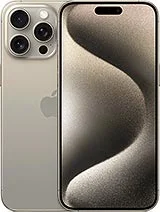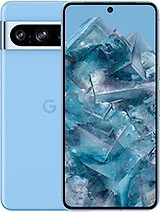With each iteration of technological advancement, these flagships the Apple iPhone 16 and the Google Pixel 9 devices continuously push the boundaries of camera capabilities, leaving audiences astounded and enthralled. But amidst the spectacle, which device truly emerges as the sovereign of capturing life’s fleeting moments? Join us as we embark on an exhilarating expedition to scrutinize and juxtapose the photographic prowess of the Apple iPhone 16 vs Google Pixel 9 cameras!
A Snapshot: Apple iPhone 16 vs Google Pixel 9 Camera Specifications
Before delving into the intricate intricacies of their performance, let us briefly peer beneath the surface to uncover the arsenal wielded by each contender:
Apple iPhone 16 Camera Specifications:

- A triple-lens rear camera system
- Enhanced Night Mode capabilities
- ProRAW support, offering unprecedented editing versatility
- Enhanced optical zoom functionality
- 8K video recording for cinematic brilliance
Google Pixel 9 Camera Specifications:

- A dual-camera setup harnessing advanced computational photography
- Pixel Visual Core, facilitating lightning-fast image processing
- Astro mode, capturing mesmerizing glimpses of the nocturnal firmament
- Enhanced Portrait Mode with customizable bokeh effects
- 4K video recording with HDR+, rendering lifelike imagery
Now that we have acquainted ourselves with the hardware prowess, it is time to subject these titans to rigorous scrutiny!
A Clash of Photographic Capabilities
Basking in Daylight Splendor: Capturing the Natural Expanse
When the radiant sun bestows its luminance upon the earth, both the Apple iPhone 16 and Google Pixel 9 rise to the occasion, presenting awe-inspiring images suffused with clarity and vibrancy.
Apple iPhone 16:
- Exhibits vivid hues and an expansive dynamic range
- Precision-engineered lenses adeptly capture intricate details with finesse
- Smart HDR technology ensures judicious exposure in every frame
Google Pixel 9:
- Distinguishes itself with true-to-life colour reproduction of unparalleled precision
- AI-driven computational photography elevates image quality to unparalleled heights
- Super Res Zoom technology facilitates crisp, detailed close-ups sans degradation
Mesmerizing in Nocturnal Obscurity: Mastering Low-Light Photography
As twilight descends and nocturnal vistas unfold, both contenders unveil their prowess in low-light photography, each with its distinctive approach and resultant imagery.
Apple iPhone 16:
- Night Mode ascends to new zeniths, illuminating even the most obscure scenes with remarkable clarity
- Deep Fusion technology adeptly captures intricate textures while minimizing noise for pristine imagery
- The ultra-wide lens captures nocturnal panoramas with breathtaking expansiveness
Google Pixel 9:
- Astro Mode unlocks the enigmatic allure of the night sky, immortalizing celestial bodies with breathtaking precision
- Night Sight feature imbues low-light scenes with luminance while preserving their inherent ambience
- Computational photography algorithms weave their magic, producing striking results even in challenging lighting scenarios
Perfecting Portraiture: Focusing on the Individual
For those fleeting instances when attention converges upon a singular subject, both the Apple iPhone 16 and Google Pixel 9 excel in delivering portrait shots of sublime perfection.
Apple iPhone 16:
- Post-capture adjustment of the bokeh effect grants precise control over background blur
- Portrait Lighting feature imparts studio-grade effects, endowing portraits with a professional aura
- LIDAR sensor enhances depth perception, ensuring accurate subject isolation
Google Pixel 9:
- The naturalistic bokeh effect is achieved through sophisticated machine-learning algorithms
- Dual-exposure controls afford nuanced adjustments of brightness and shadow, infusing portraits with artistic flair
- Real-time HDR+ processing ensures balanced exposure and vibrant hues in every portrait
FAQs: Deciphering the Photographic Conundrum
Which device boasts superior zoom capabilities?
The Apple iPhone 16 touts enhanced optical zoom functionality, ideal for capturing distant subjects with pristine clarity. Meanwhile, the Google Pixel 9’s Super Res Zoom technology excels in delivering sharp, detailed close-ups sans compromise to image quality.
Which device reigns supreme in nocturnal photography?
Both the Apple iPhone 16 and Google Pixel 9 offer commendable prowess in nocturnal photography. Nonetheless, the iPhone’s Night Mode and Deep Fusion technology stand out for their ability to illuminate dim scenes with unparalleled clarity, whereas the Pixel’s Astro Mode and Night Sight feature excel in capturing intricate details amidst low-light environments.
Are there any distinctive features exclusive to each device?
Indeed! The Apple iPhone 16 distinguishes itself with ProRAW support, affording unparalleled latitude in post-capture editing, while the Google Pixel 9 impresses with its AI-driven computational photography and Astro Mode for celestial photography.
Conclusion:
As our epic saga draws to a close, it is evident that both the Apple iPhone 16 and Google Pixel 9 stand as formidable contenders in the arena of mobile photography. Each device brings forth its unique strengths, whether it be the iPhone’s nocturnal prowess or the Pixel’s computational wizardry.
Ultimately, the choice between these devices is a matter of personal predilection and priorities. Whether one prioritizes versatility, editing flexibility, or sheer photographic prowess, rest assured that both the Apple iPhone 16 and Google Pixel 9 stand poised to immortalize life’s cherished moments in exquisite detail. So, pick your allegiance, seize your smartphone, and let the photographic odyssey commence!